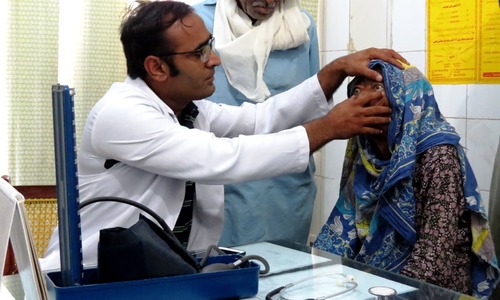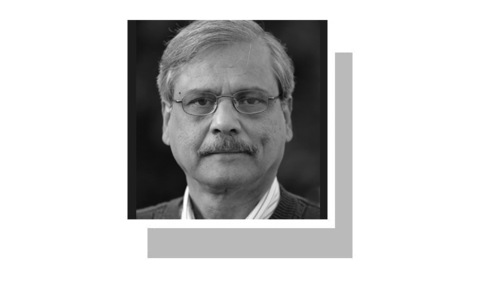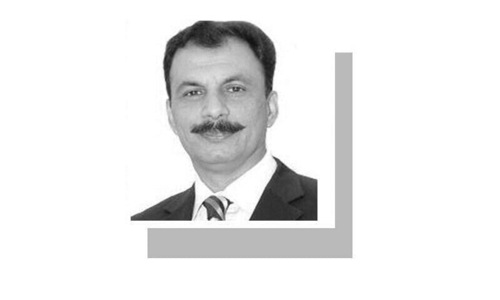Punjab’s Rs2.23 trillion budget for the next financial year lays the ground for the ruling Pakistan Tehreek-i-Insaf’s 2023 election campaign in the largest province of the country. The hefty boost of over 66 per cent in the development stimulus to Rs560bn, which rolls out goodies worth Rs100bn for the PTI legislators under its district development package, gives a major push to economic growth in line with the newly adopted expansionary federal fiscal strategy to mould critical public opinion ahead of the next polls.
If everything goes according to the federal script — that is, if the Federal Board of Revenue (FBR) rakes up the targeted tax revenues and if foreign aid flows increase in the shape of multilateral and American dollars in a changing geopolitical situation in the region after Washington’s pullout from the war-ravaged Afghanistan, we may notice a stronger push for growth and larger goodies for PTI legislators in 2022-23, the last year of the party’s term in power and closer to the elections.
Unlike his predecessor who focused more on large infrastructure schemes like the multi-billion-rupee transport projects in major cities, the Usman Buzdar administration seems to have chosen a different route: focus on smaller public works schemes in areas of water supply, sanitation, education, health, road infrastructure and so on that directly affect people and their voting choices. “We’re focusing on human development instead of spending money on large, politically motivated schemes,” finance minister Makhdum Hashim Jawan Bakht said at the post-budget presser.
Unlike his predecessor who focused more on large infrastructure schemes, the Buzdar administration has chosen smaller public works schemes that directly affect people and their voting choices
Critics say the uncertainty about the flow of the promised federal transfers under the revenue-sharing formula between the Centre and the provinces could be a major reason behind making this choice. “Time constraints might be the other factor, keeping it from pursuing larger schemes with greater visibility,” an official said privately. Whatever the motive, it has provided the chief minister with a tool to please the party legislators complaining about the impact of the austere economic policies being pursued for the last three years on voters, and demanding development funds for schemes in their constituencies before going into the next elections.
The finance minister says the guiding principles adopted for the next fiscal’s development programme include growth-led investment, inclusive and balanced regional development, the transformation of the agriculture sector, human development through skills development, enabling environment for the private sector resource mobilisation, and targeted investments in priority projects through the Economic Revival Programme. “Focus on regional equalisation for the development of south Punjab will also support the development of the backward areas of the province.”
Hence, the key expenditures proposed for the next year include a sum of Rs60bn for expanding the scope of its flagship Universal Health Insurance scheme to cover the entire provincial populace by the end of 2021, Rs105bn for roads, Rs50bn for combating the Covid-19 pandemic, Rs189bn for development of south Punjab, tax reliefs of Rs50bn for businesses and consumers, construction of five mother & child healthcare hospitals, upgradation of 8,500 schools in the first phase, establishment of 19 universities and so on.
Allocations for the social sector have also been increased considerably. The public spending on health is proposed to be enhanced by 30pc to Rs369.3bn and for education by 13pc to 442.1bn. Infrastructure expenditure is increased by 57.9pc to Rs204.3bn. The interventions to boost the rural economy will cost Rs96.8bn, up by 57pc from the present year.
Just like the expansionary federal budget, the Punjab budget will likely build growth momentum and engender economic optimism in the near term, bolstering the ruling party’s electoral prospects in the province. But it also stands on a weaker leg like the federal plan. Why is that so?
The budget estimates are based mainly on the assumption that the FBR will collect its more than Rs5.83tn tax revenues that would enable Islamabad to transfer to the province the promised funds of Rs1.68tr or above 75pc of its total receipts of Rs2.23tr that also include foreign assistance of Rs65.2bn, provincial own tax and nontax income of Rs404.6bn and capital receipts of Rs79.2bn. The government is maintaining a surplus of Rs125bn to cover the potential shortfall in federal transfers. But will that be enough? That is the question.
Shirking responsibility
The one word that explains the Punjab agriculture budget is “shirking responsibility.” The centre had deflected the responsibility of investment to the province when it came out with its finance bill last week, despite being an extension of the centre as both are run by the same party if not the same man. Officially, it has spared Rs31 billion for the next year — Rs18bn is a throw forward to be invested on ongoing schemes and the rest of Rs13bn is set aside for 30 new schemes. Out of Rs13bn, the biggest chunk would be going for model markets in some cities of the province — a project, which is still more of a concept than a ground reality. This leaves around Rs5bn for these schemes and the entire year.
Would Punjab be able to sustain, leave alone revive the sector? The biggest loss of the province, and the sector, has been cotton. The agriculture sector revival plan was expected to revolve around cotton, which is completely missing in the budget. The only time cotton is mentioned is the building of a research institute in the chief minister’s area. No one knows how an eighth institution would be able to revive when it declined in the presence of earlier seven, and over 70 per cent of scientists already committed to cotton.
As far research, the biggest hope for revival, the budget has proposed Rs668 million for Agriculture Research Board. Actual utilisation, or call it the release of funds, is another issue. Last year, Pakistan Agriculture Research Board was given Rs565m and its actual spending was Rs102m. With these amounts, Punjab plans to revive a sector that contributes one-fifth of its $173bn economy.
About addressing the major cause of sectoral crisis i.e. the cost of production, the budget is simply silent. —AFK
Published in Dawn, The Business and Finance Weekly, June 21st, 2021














































